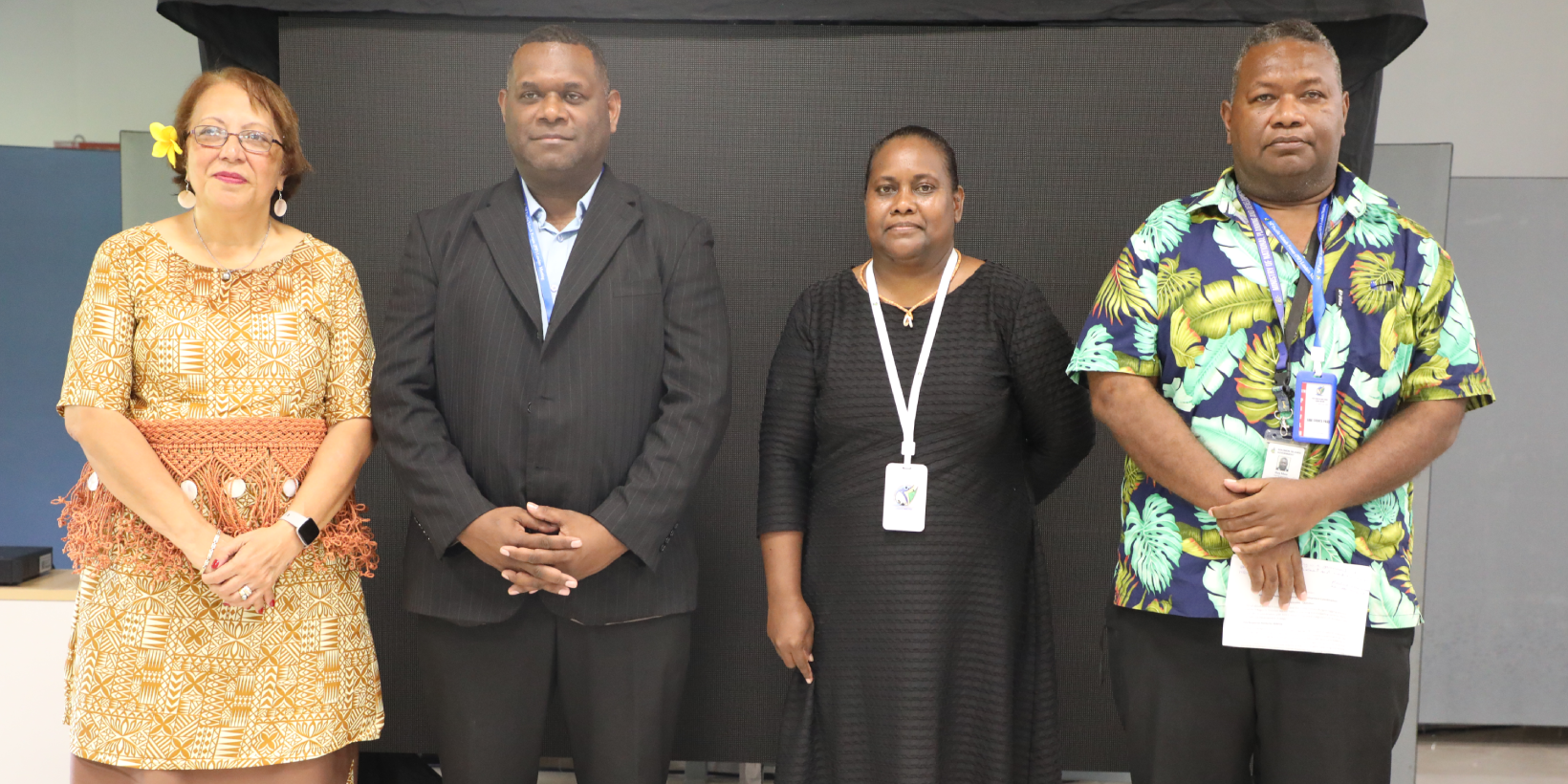HONIARA – The Ministry of Environment, Climate Change, Disaster Management and Meteorology (MECDM), showcased a suite of national resilience tools at a side event during the 54th Pacific Islands Forum Leaders Meeting (PIFLM54).
The event, themed “Unpacking Resilience: Strengthening Systems, Capacities and Practical Solutions,” was held at the NHA Food Court, Aquatic Center, Panatina.
These tools are designed to assess vulnerabilities, guide planning, and strengthen resilience across Solomon Islands.
The Ministry, with its broad mandate covering environment, conservation, climate change, disaster management, and meteorology, has developed and mainstreamed several critical planning tools. These tools are essential for designing, implementing, and budgeting programs and projects to address complex environmental and climate challenges.
Key National Tools:
- Environment Impact Assessment (EIA): A legal mandatory safeguard tool for prescribed development projects like infrastructure, mining and logging, by identifying, assessing and proposing mitigation measures for potential environmental impacts. It also serves as a baseline for monitoring compliance.
- Ecosystem and Socio-economic Resilience Mapping (ESRAM) is an assessment framework that evaluates environmental, social, economic, and governance risks and resilience opportunities, guiding the development and implementation of Ecosystem-based Adaptation (EBA) options for communities.
- Solomon Islands Integrated Vulnerability Assessment (SIIVA), championed by the Climate Change Division, it offers a holistic view of social, economic, and environmental vulnerabilities. The data collected supports provincial and sectoral planning, as well as national strategies such as the National Climate Change Policy and National Adaptation Plan.
- Community Based Disaster Risk Management Tool (CBDRM), developed by the National Disaster Management Office, strengthens local-level resilience by embedding disaster risk reduction measures into communities’ plans and practices. It focuses on enhancing community knowledge of disasters, risk assessment, preparedness, response, and recovery, incorporating traditional knowledge.
The Solomon Islands has actively “localized” these methodologies to fit its specific circumstances. This includes incorporating customary land and marine tenure systems into the EIA process, integrating traditional knowledge with scientific data in ESRAM and SIIVA to reflect the country’s fragile small-islands realities, and building CBDRM on existing community governance structures like chiefs, church networks and women’s groups.
The overall focus remains on aligning vulnerability assessments with national sustainable development and climate change strategies, such as the National Development Strategy (NDS) and NCCP (2023).
Despite challenges such as limited GIS data, low surveyor capacity, and funding delays for SIIVA, the Ministry has taken proactive measures. These include recalibrating site selection, developing a comprehensive SIIVA Training Manual, conducting pre-mission tech checks, implementing drone mapping, and proposing a dedicated SIIVA Coordinator role. A co-financing model is also being promoted to expand coverage.
“Integration is key, and ownership matters,” said Ms Agnetha Vave-Karamui, Deputy Secretary Technical for the Ministry of Environment Climate Change Disaster Management and Meteorology.
“Our tools are most effective when results are linked across sectors and levels, and when communities, provinces, and ministries are actively engaged. This ensures buy-in and sustainability.
“Capacity building through technical training and knowledge transfer is essential, enabling us to learn by doing and ensuring our beneficiaries (people and communities) understand how these interventions will positively impact their lives and livelihoods”.
Ms Vave-Karamui said, looking ahead, the Ministry aims to institutionalize SIIVA as a core CCD program with an annual budget line, make it a minimum requirement under the Provincial Capacity Development Fund (PCDF) structure, and train provincial officers to lead local assessments. The goal is to expand SIIVA coverage to over 200 communities by 2027 through co-financing.
She emphasized that resilience is not a single solution but an interconnected web where infrastructure, governance, economy, health, education, climate change, diverse cultures, and environment all reinforce one another.
“National-led processes must be inclusive, involving diverse voices including women, youth, elders, and different language groups, and recognizing the unique realities and traditional knowledge of islands and communities to ensure solutions meet real needs and ultimately contribute to meeting the Sustainable Development Goals (SDGs)”
These tools collectively form the Solomon Islands’ national evidence base for understanding environmental and climate vulnerabilities, ensuring resources and services are directed to the most vulnerable and at risk sectors, provinces, and communities.
The Side Event was organised by the Government of Solomon Islands through MNPDC and MECDM, UNDP, The government of the Kingdom of Tonga and the Pacific Islands Forum Secretariate.
– MECDM









